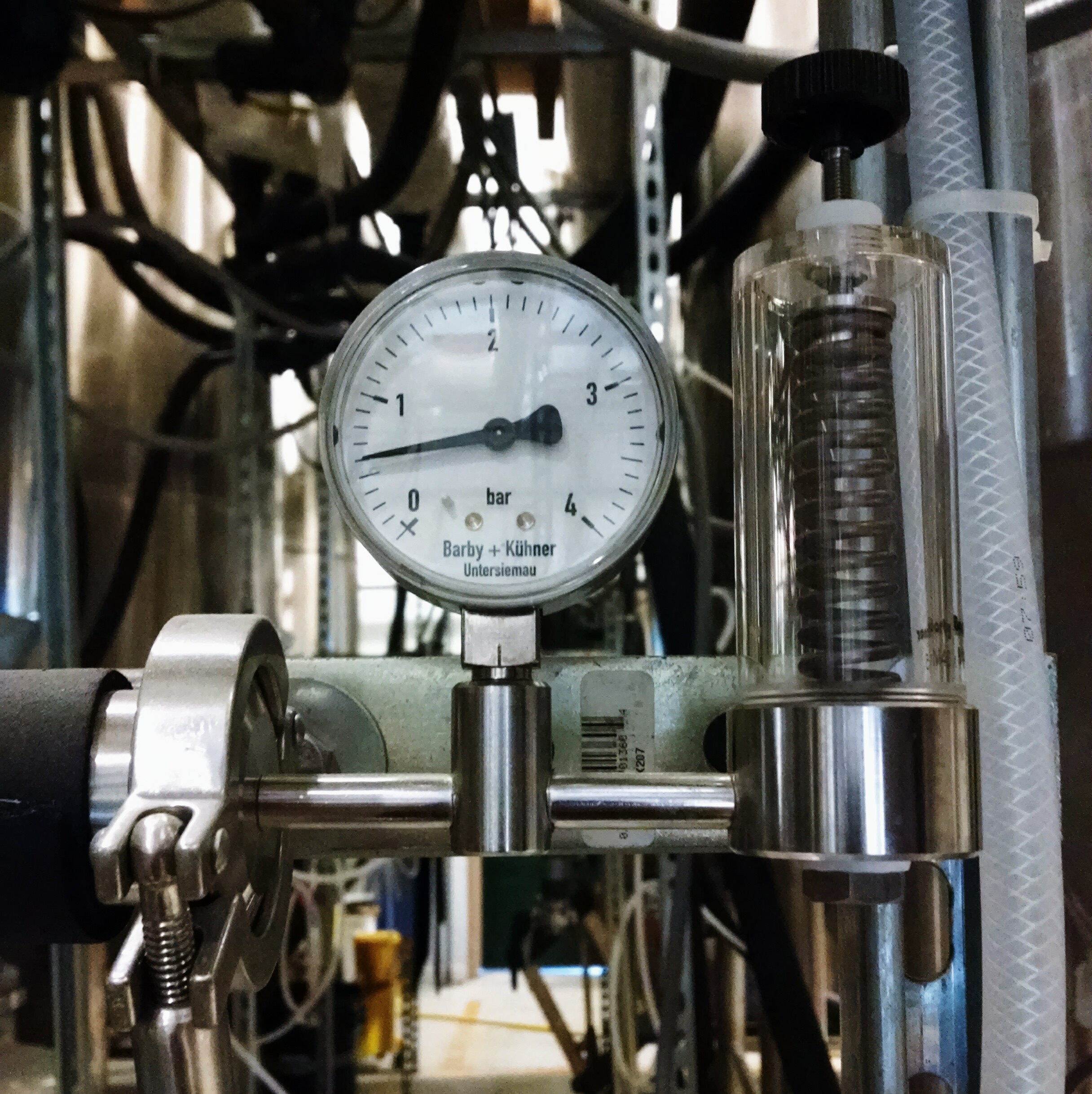In our quest to bring you the best lager possible, we’re constantly reviewing and revising our methods. In the past year we’ve made the switch from using an injection carbonation method, to naturally carbonating all our beers. This has brought about a number of changes both in the equipment we use and in the way we dry hop our beer. In true Jack’s Abby fashion we’ve turned to both tradition and innovation to get the job done.
Spunding is a process often used by lager brewers to naturally carbonate their beer. A device called a spunding valve is attached to our tanks late in fermentation, when most of the sugars in the wort have been processed by our yeast. The spunding valve carefully controls the release of CO2 keeping the tank, keeping the tank pressurized and producing a desired effervescence and mouthfeel. The spunding method’s advantages are considerable. Naturally carbonated beers often have brighter flavors and a more consistent mouthfeel. However, making the change did present a unique challenge to our brewers how do you dry hop a tank that needs to remain sealed?
Dry hopping is the addition of dried hops to beer with the goal of imparting additional flavors and aromatics. Certain essential hop oils can boil off or be altered by our yeast earlier in the brew process, but we can reintroduce them via dry hopping. With the fermentation vessels now under pressure, we could no longer open them up to add dry hops or the beer would foam out! To solve this problem, we commissioned a small tank from our friends at Tig Pro Fabrication in Portland, ME. This tank would become our new dry hopping vessel, although we now use the term “slurry hopping” to more accurately describe the process (our brewers also affectionately call this process “slurming”). We hook the slurry hopper up to a fermentation tank, fill it with dried hops, vent the oxygen from it, and then fill it with beer creating a “hop slurry”. We then push the slurry back into the tank, achieving the same effect as standard dry hopping while maintaining the natural carbonation we get from spunding. An additional benefit is that we no longer have to expose our beer to oxygen during dry hopping, reducing oxidation and further preserving flavors in the beer.
Overall, we think these changes in our production methods have resulted in better beer, and we hope you think so too! Prost!
Collin Dunbar, 2015









Great stuff! Another benefit to "Spunding and Slurming" is that you don't have to truck in large tanks of CO2 to force carbonate the beer because your using the natural CO2 produced during fermentation.
I was wondering, are your tanks ASME rated or can you run this valve on a tank rated for 1Bar pressure? What temp are you usually at when you bung the tank?
Hey Thomas,
We can run at 1Bar and the temp depends on the style of beer. Do you have a specific beer in mind?
I want to naturally carbonate my helles in a horizontal tank, but am in the decision phase on whether I need an ASME rated tank to 2Bar or if I can swing it with a spunding and 1Bar.
schedule:
Transfer from primary fermentation to conditioning tank @6C w/ .9Plato left to terminal. Bung tank and set spunding valve to achieve around 2.8 vols CO2. I want to know if I need a 2Bar tank or a 1bar tank. What do you guys have?
What an exquisite experience in the artwork of brewing! Your dedication to the craft is evident in the meticulous small print of spending and slurping. A fascinating and academic read!